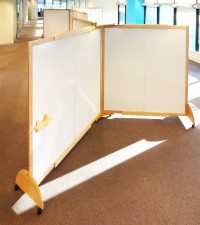

Local New Jersey Residents committed to the rebuilding effort and more The best possible direction, service and support in light of the damageĬollectively, our team has built hundreds of custom modular homesĪlong the New Jersey Shoreline and that same team consists of lifelong The collective was formed by local New Jersey builders,Įngineers, architects and designers to ensure that our New Jersey Home builders, designers, engineers, architects and contract 1.Ĭoastal Modular Group is a collective of New Jersey’s premier modular Our team will guide you not only on building regulations but also insurance cost implications.Ĭall our help line for additional information regarding any points of this article 73 x. Including enclosures in a building design can have significant cost implications." (3) even the presence of properly constructed breakaway wall enclosures will increase flood insurance premiums for the entire building (the premium rate will increase as the enclosed area increases). (2) enclosures, and most items within them, are not covered by flood insurance and can result in significant costs to the building owner (1) enclosures and items within them are likely to be destroyed even during minor flood events Had it broken-away as designed, there likely wouldn’t have been any damage to the livable area of this building.As per FEMA, "Designers and owners should realize that: A large obstruction can be seen behind the wall, preventing it from breaking-away. The window was smashed and flood waters rushed inside. Concrete slabs under an elevated building should be either structurally independent of the home foundation and designed to break away under flood conditions, or be designed to fully withstand flood forces including scour ( 2021 IRC 322.3 ). When this wall failed to break-away, the wave action was deflected upwards. Breakaway walls are designed to collapse under flood forces without affecting or damaging the rest of the home’s structure. If designed properly, the following photograph shows how a ground floor enclosure with breakaway walls would/should look after a ravaging storm. Wooden lattice will break more readily when struck by floating debris. It won’t break, and will collect a large amount of debris causing the wave action force to be transmitted to the entire building. Plastic lattice is much too durable for below flood applications in type "V" and "Coastal A" flood zones.Exterior siding is extended down to cover breakaway walls.
#Module home breakaway walls builders free#
Free from obstructions: If there’s something big installed next to such a wall - freezer, refrigerator, heavy shelving etc, it’ll prevent the wall from breaking-away.Interior finishes makes these walls harder to break-away, and encourage occupancy where prohibited. Inside is finished: Breakaway walls are considered expendable, for the greater good of the building.These walls can’t break-away as designed if pipes and wires will tie them to the building. No utilities can be attached to or through these walls, such as: pipes, electrical wiring etc.Construction / Inspectionīreakaway wall inspections often fail for these reasons: Once these walls break-away, the water rolls back and forth under the building between the columns, exerting very little force upon the building. If these walls didn’t break-away, the forces against them would be transmitted to the entire building, which could cause it to collapse. For the same house, expect to pay 120,000 to 240,000 total for a complete turn-key installation. (V-Zone Certification form.) Purpose of the Walls modular home is 75,000 to 150,000 or 50 to 100 per square foot for a base model, not including customizations, assembly, or on-site finishing work. These breakaway walls must be designed and certified by an Engineer to certain pressure tolerances, so when violent waters hit these walls they break-away from the building. "V" zones are located along or near coastlines, where the "velocity" from breaking waves is considered most destructive, and where building codes have higher standards. However, these areas must have breakaway walls and flood vents. In type "V" and "Coastal A" flood zones, enclosed areas below flood levels may be used to for minimal storage, parking and access to upper levels.


 0 kommentar(er)
0 kommentar(er)
